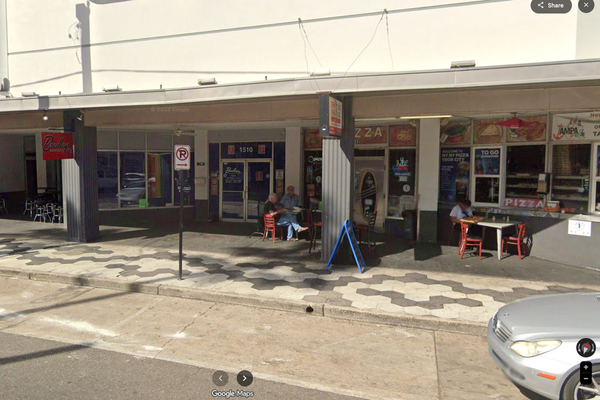
We often take comfort in our homes, assuming everything inside is safe and familiar. But lurking behind that cozy environment are several everyday items that quietly increase your risk of a house fire. Many of these hazards can be addressed with just a few simple changes to your daily routine. Are any of these nine things lurking in your home?
1. Power Strips and Extension Cords
Power strips and extension cords are convenient, but when overused or used incorrectly, they become serious fire hazards in the home. Many people daisy-chain them together or plug in high-wattage appliances that exceed their capacity. These cords can overheat, especially when placed under rugs or behind furniture, limiting airflow. A single spark from an overloaded power strip can ignite nearby materials in seconds. Always follow manufacturer guidelines and invest in surge protectors with auto-shutoff features for added safety.
2. Dryer Lint Build-Up
That fluffy lint in your dryer might seem harmless, but it’s one of the most common causes of house fires. When lint accumulates in the lint trap or dryer vent, it restricts airflow and traps heat. Over time, this creates the perfect condition for a fire to ignite during a drying cycle. Cleaning the lint trap after each load isn’t enough—you should also clean out the dryer vent hose at least twice a year. Neglecting this task could turn laundry day into a disaster waiting to happen.
3. Unattended Candles
Candles add ambiance, but they’re a leading source of accidental house fires. It only takes one forgotten flame or a curious pet knocking it over to start a fire. Even when placed on a solid surface, the heat from a candle can ignite surrounding objects like curtains or furniture. Flameless battery-operated candles offer a much safer alternative, especially for households with children or pets. If you must use real candles, never leave them unattended, even for a minute.
4. Laptop Chargers and Devices on Beds or Sofas
Many people leave laptops and charging phones on beds, couches, or under blankets—without realizing how quickly they can overheat. Soft surfaces trap heat, and that trapped heat can cause lithium-ion batteries to malfunction or ignite. Charging electronics on beds is a surprisingly overlooked fire hazard in the home. Always charge your devices on a hard, flat surface with plenty of ventilation. A little caution can prevent a major emergency.
5. Cluttered Outlets Behind Furniture
It’s easy to forget about the tangled mess of plugs and cords behind your sofa or entertainment center. But blocking airflow around electrical outlets can cause them to overheat, especially when overloaded. Dust and pet hair buildup in these areas can also act as kindling if a spark occurs. Make it a habit to inspect and dust behind your furniture regularly. Keep cords organized and avoid cramming too many plugs into one outlet.
6. Old or Damaged Appliances
Appliances like toasters, space heaters, and even coffee makers can become dangerous over time. Frayed cords, worn-out insulation, or outdated safety features make older models more prone to electrical fires. If your appliance sparks, smells odd, or feels unusually hot, it’s time for a replacement. Pay close attention to recalls or manufacturer notices for items in your kitchen or laundry room. A new model is often far cheaper than the damage a fire would cause.
7. Cooking Grease and Oil
Grease buildup in the kitchen can turn one small accident into a raging fire. Oil splatters, unclean stovetops, and improper grease disposal all contribute to one of the leading causes of residential fires. A pan left unattended for even a minute can overheat and ignite the oil. Keep a metal lid nearby when frying, and never try to put out a grease fire with water. Instead, smother it or use a kitchen-rated fire extinguisher.
8. Space Heaters Too Close to Flammable Items
Space heaters provide warmth during colder months, but they can be incredibly dangerous if placed too close to fabrics or furniture. They radiate intense heat, and any contact with flammable materials like curtains, blankets, or paper can result in disaster. Always follow the “3-foot rule”—keep space heaters at least three feet away from anything that can catch fire. Make sure the model you’re using has automatic shutoff features in case it tips over.
9. Forgotten or Poorly Maintained Smoke Alarms
A smoke alarm that’s missing batteries or hasn’t been tested in months is basically useless. These little devices are your first line of defense in a fire, giving you time to react and escape. Many people disable alarms due to false alerts, not realizing they’re risking their family’s safety. Test your smoke detectors once a month and replace batteries at least once a year. If your alarms are more than 10 years old, replace them entirely.
Your Home’s Safety Might Be Hiding in Plain Sight
It’s easy to overlook these everyday fire hazards in the home because they seem so ordinary. But awareness and small adjustments can make a massive difference when it comes to protecting your loved ones and your property. Take a few minutes this week to inspect your appliances, cords, and detectors—those quick checks could save lives. Preventing a house fire doesn’t always mean installing expensive equipment; sometimes, it just means noticing what’s already there. Don’t wait for a close call to make safety a priority.
Which one of these fire hazards caught you off guard? Let us know in the comments—your story might help someone else stay safe too!
Read More
10 Garage Hacks That Were Exposed as Fire Hazards
9 Garage Projects That Quietly Violate Fire Codes
The post 9 Innocent-Looking Things in Your Home That Are Fire Hazards appeared first on Clever Dude Personal Finance & Money.







